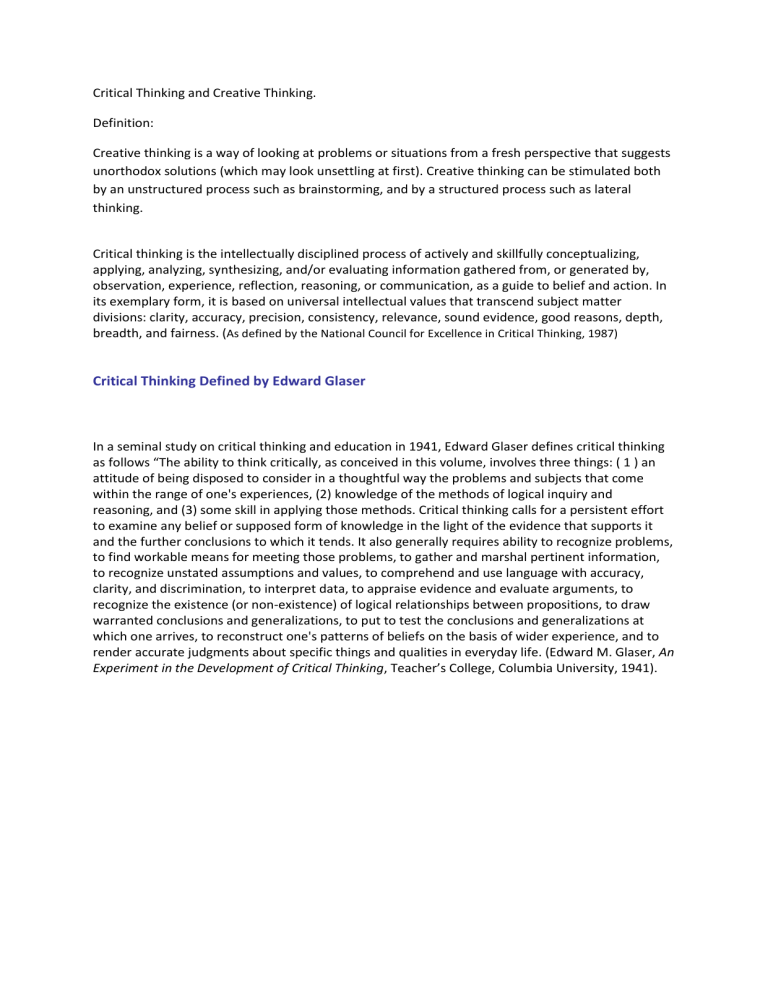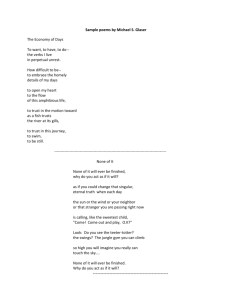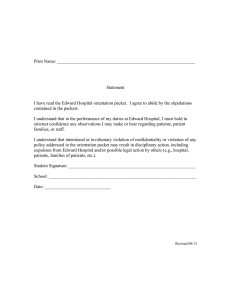
Critical Thinking and Creative Thinking. Definition: Creative thinking is a way of looking at problems or situations from a fresh perspective that suggests unorthodox solutions (which may look unsettling at first). Creative thinking can be stimulated both by an unstructured process such as brainstorming, and by a structured process such as lateral thinking. Critical thinking is the intellectually disciplined process of actively and skillfully conceptualizing, applying, analyzing, synthesizing, and/or evaluating information gathered from, or generated by, observation, experience, reflection, reasoning, or communication, as a guide to belief and action. In its exemplary form, it is based on universal intellectual values that transcend subject matter divisions: clarity, accuracy, precision, consistency, relevance, sound evidence, good reasons, depth, breadth, and fairness. (As defined by the National Council for Excellence in Critical Thinking, 1987) Critical Thinking Defined by Edward Glaser In a seminal study on critical thinking and education in 1941, Edward Glaser defines critical thinking as follows “The ability to think critically, as conceived in this volume, involves three things: ( 1 ) an attitude of being disposed to consider in a thoughtful way the problems and subjects that come within the range of one's experiences, (2) knowledge of the methods of logical inquiry and reasoning, and (3) some skill in applying those methods. Critical thinking calls for a persistent effort to examine any belief or supposed form of knowledge in the light of the evidence that supports it and the further conclusions to which it tends. It also generally requires ability to recognize problems, to find workable means for meeting those problems, to gather and marshal pertinent information, to recognize unstated assumptions and values, to comprehend and use language with accuracy, clarity, and discrimination, to interpret data, to appraise evidence and evaluate arguments, to recognize the existence (or non-existence) of logical relationships between propositions, to draw warranted conclusions and generalizations, to put to test the conclusions and generalizations at which one arrives, to reconstruct one's patterns of beliefs on the basis of wider experience, and to render accurate judgments about specific things and qualities in everyday life. (Edward M. Glaser, An Experiment in the Development of Critical Thinking, Teacher’s College, Columbia University, 1941). Differences Creative Thinking Critical Thinking happens on the right lobe of the brain happens on the left lobe of the brain Not linear linear logic cannot be rushed requires focus and deliberate effort generative in purpose analytical in purpose non-judgmental and expansive not so expansive quite free by nature (not selective) employed in areas such as poetry, novel writing, short story writing and fiction writing all about imagination and imagery. selective employed in organizations, business areas and the like aimed at improving the quality of products

